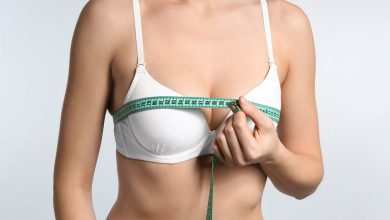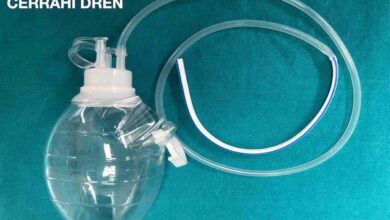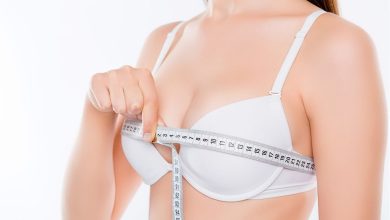Breast Asymmetry — Tuberous Breast Deformity
“Tuberous Breast” (tubular breast) deformity, colloquially known as “Goat Breast,” is one of the most common causes of breast asymmetry. In young girls, this deformity may cause serious self-confidence problems as well as psychological anxiety. In this article, I aimed at providing more detailed information about the causes and treatment methods of tuberous (tubular) breast deformity and asymmetric breast.
What Is Breast Asymmetry?
Breast asymmetry (asymmetric breast) is defined as a condition in which two breasts differ in shape and volume from one another. In both men and women, mild inequalities between the two breasts are common. There are many factors that can cause remarkable asymmetries at various ages to an extent that psychologically affect the person.
What are the Causes of Breast Asymmetry (Asymmetric Breast)?
- Breasts are often not perfectly symmetrical. It is natural to have some inequality in the shape and size of the breasts, as well as in the level and shape of the nipples and areolas. In some cases, these inequalities can be noticeable and impair people’s quality of life, leading to serious psychological problems and a loss of self-confidence.
- Breasts asymmetry can be observed from the beginning of breast development in adolescence, or it may develop later in life due to a variety of factors.
- During adolescence, one breast may enlarge more than normal (virginal hypertrophy), or one breast may not develop while the other breast develops normally. Due to some congenital diseases such as Poland syndrome, such an unilateral breast growth retardation can be observed.
- Breasts that grow during pregnancy and lactation may not shrink symmetrically in the subsequent shrinking process, and the shrinkage is usually accompanied by sagging.
- Rapid weight loss processes, some degenerative breast diseases and the inflammatory condition called mastitis can also lead to the development of breast asymmetry.
- Varying degrees of breast asymmetry develop after surgical treatment of tumors, especially after the operations which involve the removal of the tumor or the entire breast tissue unilaterally.
- A volumetric decrease in the mammary glands and adipose tissue in the breasts are observed during the aging process, and asymmetries may develop when there is no pathological cause.
- Breast asymmetry may develop in male breasts starting from adolescence, and in addition, asymmetries may be observed in later ages due to tumors, diseases, or the use of certain hormones or drugs.
What is Tuberous Breast (Goat Nipple) – Tuberous Breast Deformity?
- This condition known as tubular or tuberous breast deformity may cause a variety of morphological and volumetric asymmetries in both breasts due to insufficient development of the breast skin.
- It is a breast deformity that occurs in the form of the growing breast tissue protruding forward from the upper half of the breast and the nipple, especially as a result of the underdevelopment of the lower half of the breast skin. The inframammary fold is is above the level where it should be. The pigmented area (areola) around the nipple has grown more than normal, and there is a significant asymmetry between the deformed breasts. In the surgical treatment of this condition, the inframammary fold is raised to the required level.
- The volume of the lower half of the breast, in particular, is increased with a silicone implant. The enlarged drooping nipple, as well as its circumference (the Nipple-areola complex), are reduced and elevated. It is difficult to achieve complete shape and volume symmetry in a single session. In most cases, minor revisions are required. Sagging and some deformation in the breasts may develop over time or after pregnancy and excessive weight fluctuations. The areolas may re-enlarge over time. However, such deformations can be easily corrected with revision surgery.
How Is Breast Asymmetry Surgery Performed?
- The surgical treatment is intended to equalize the size and shape of the two breasts. For doing this, a breast that is larger than normal can be reduced, and a breast that is smaller than normal can be augmented by placing a breast implant. In some cases, one breast should be reduced while the other is augmented.
- For limited and localized breast augmentation, injection of fat cells harvested from the person’s own body can be preferred to silicone implant placement.
- During the breast asymmetry surgery, deformation problems in the nipple can be resolved, and the areolas can be equalized.
- In the postoperative period, it is of critical importance to lie in a semi-sitting position and avoid straining the arm.
What Are The Dos And Don’ts Before Breast Asymmetry Surgery?
You should be careful to avoid drugs and nutritional supplements with blood-thinning effect for at least 15 days before the operation. You should learn the full list of blood-thinning substances, so that you can avoid taking them.
You should also take the necessary precautions to prevent the transmission of the COVID-19 virus by taking the pandemic conditions. The dos and don’ts before surgery can be found on our website’s page before surgery. On our blog page, on the other hand, you can learn about the points to take into account in order to have safe plastic surgery during the pandemic.
What Are The Dos And Don’ts After Tuberous Breast Surgery?
After the operation, you should lie in a semi-sitting position and avoid straining your arms. Since silicone breast implants are commonly used in these surgeries, I recommend you to read the page breast augmentation in our website to get more detailed information about the points to consider after surgery, features of the silicone implant to be use, and the risk and complications of surgery.
2024 Breast Asymmetry Surgery
The cost of breast asymmetry surgery or tuberous breast surgery varies depending on the degree of deformity, the number and type of silicone implants used, and the hospital where the surgery will be performed. You can contact our office to learn what surgical procedure you need and how much it will cost you.


